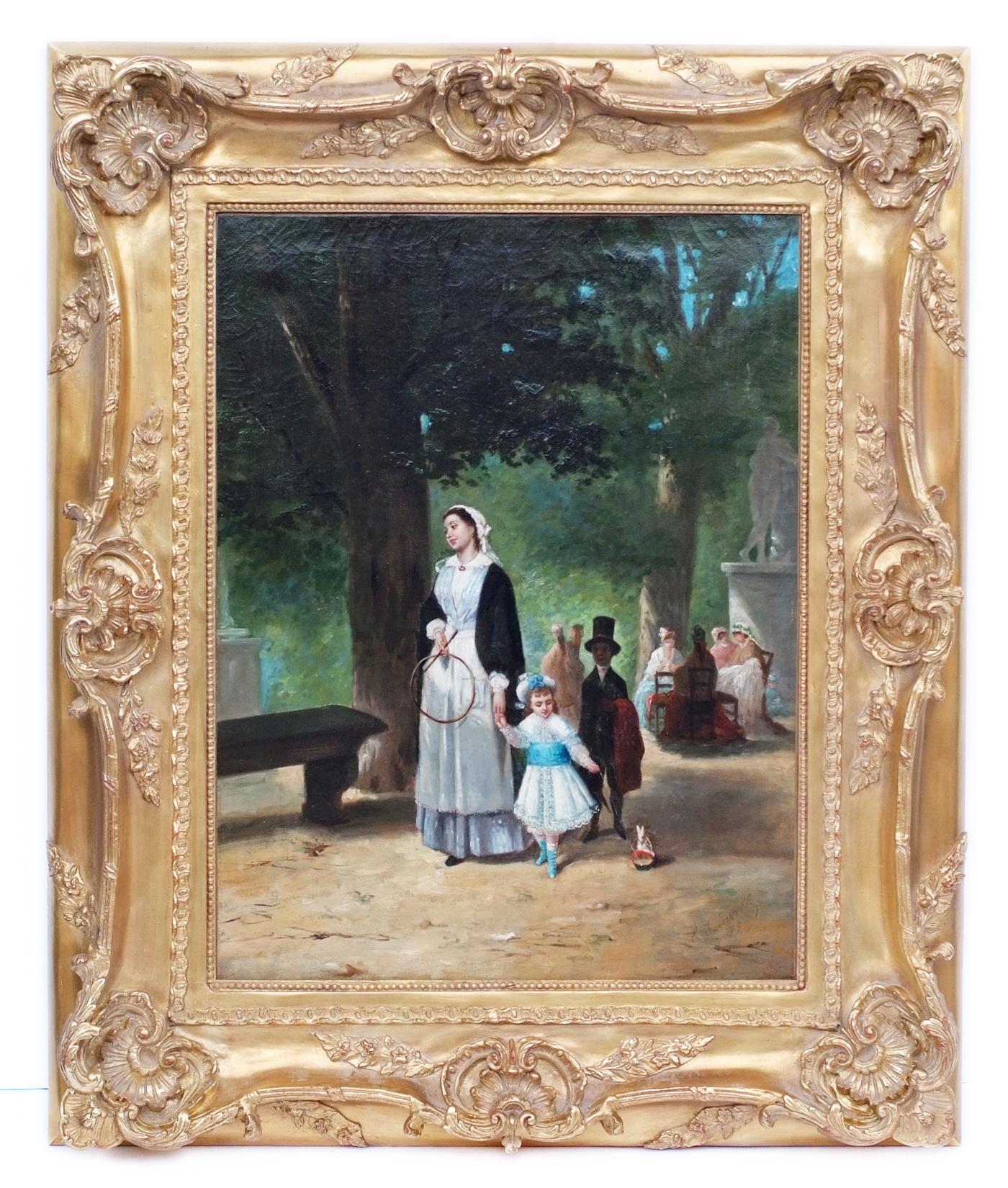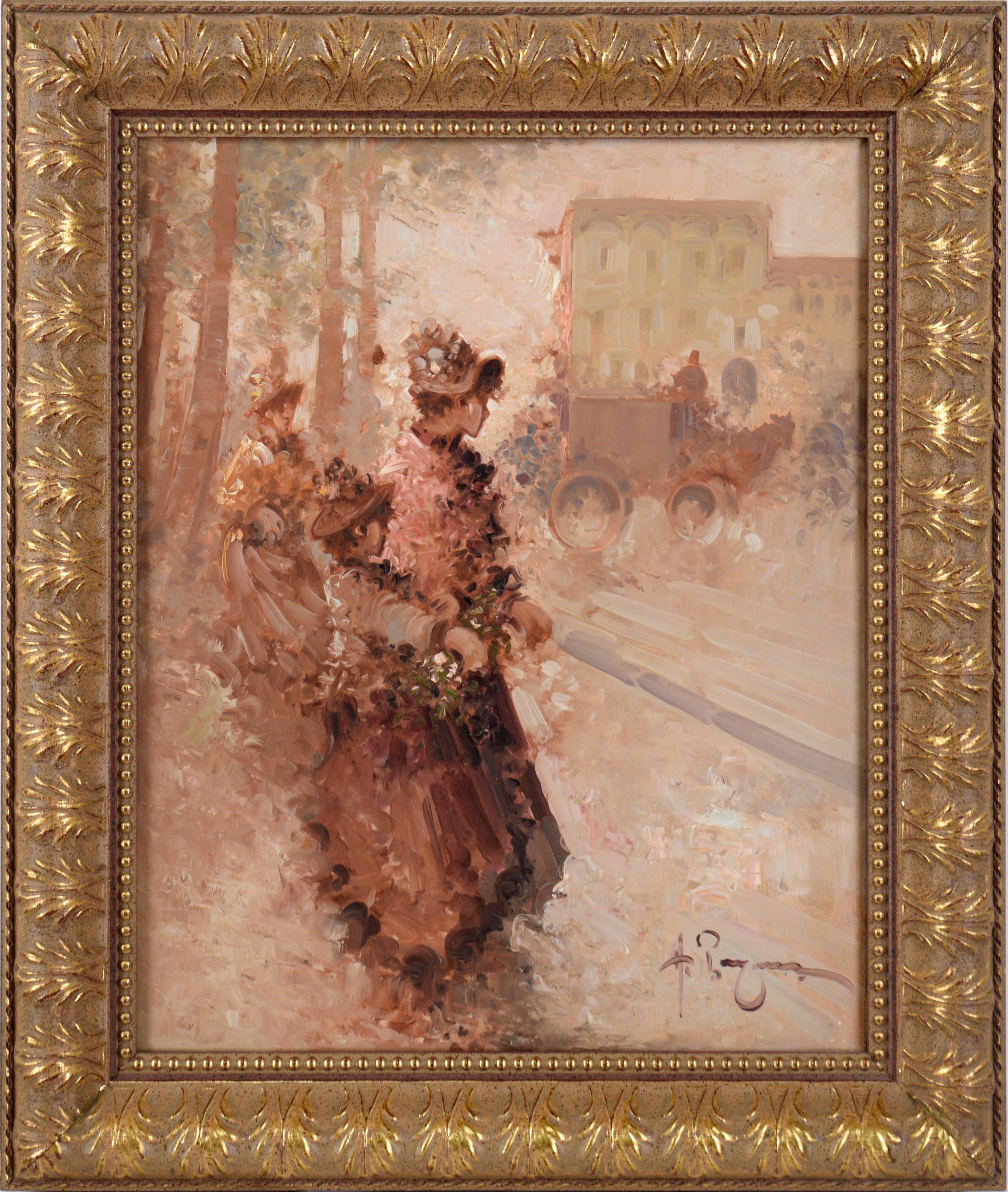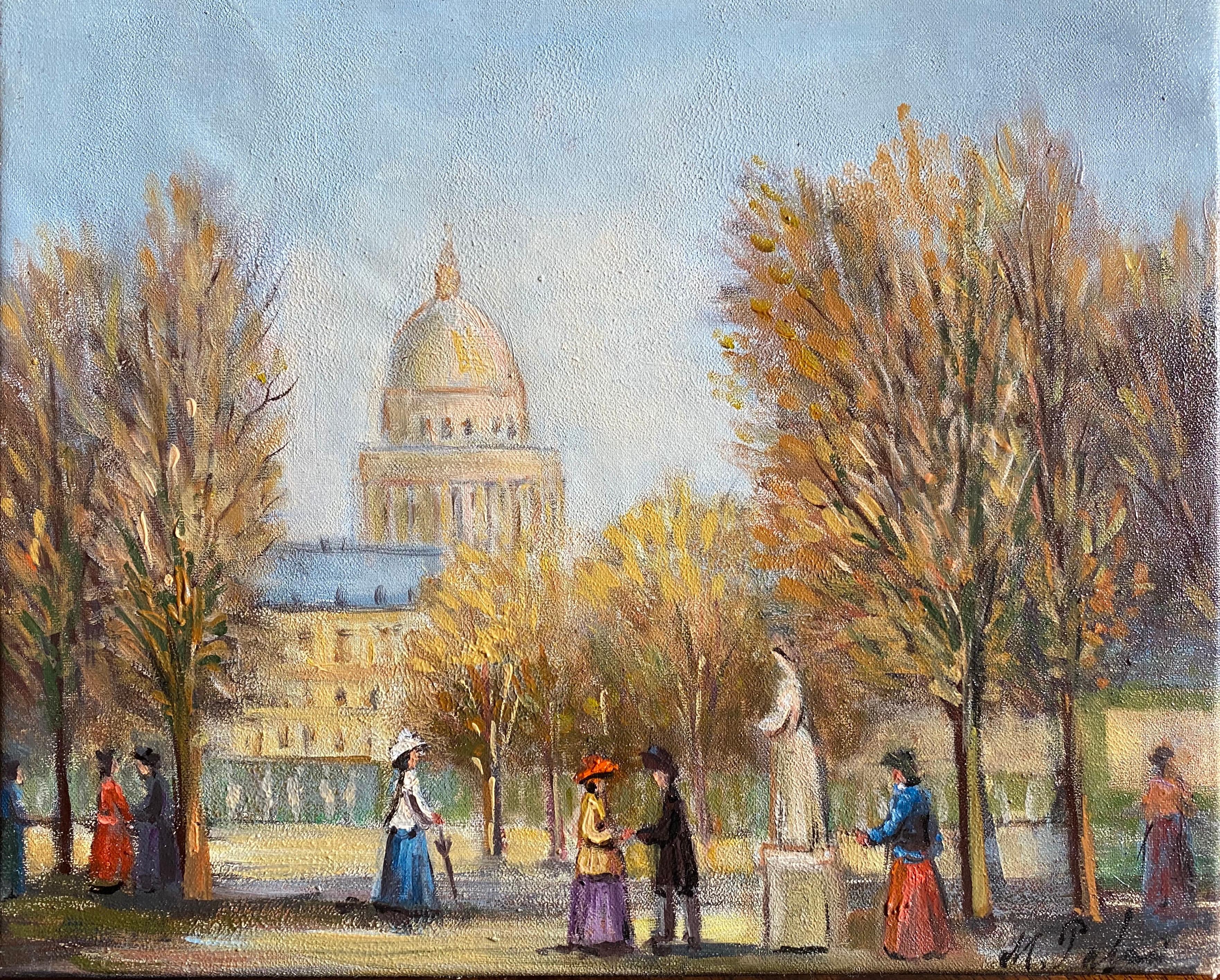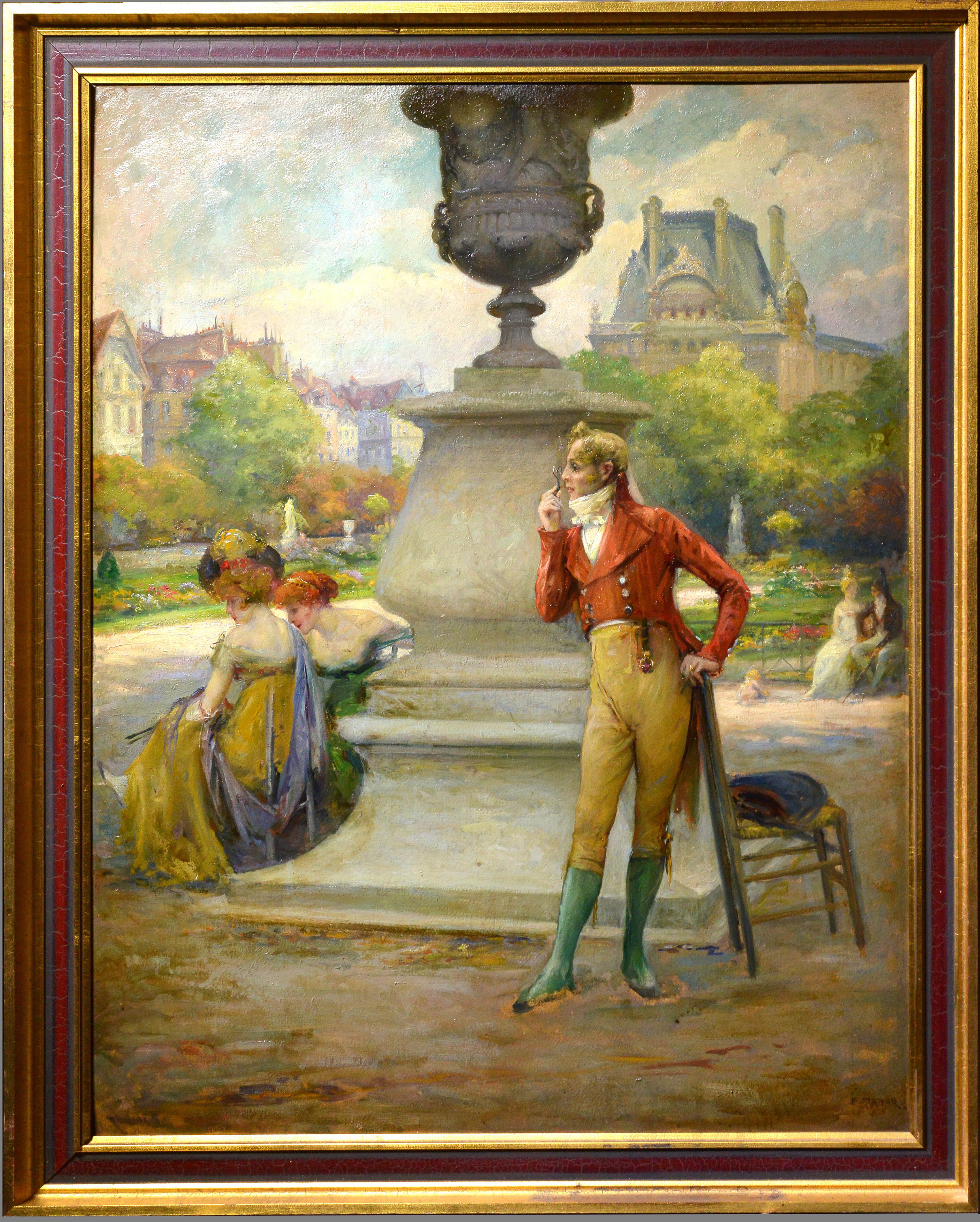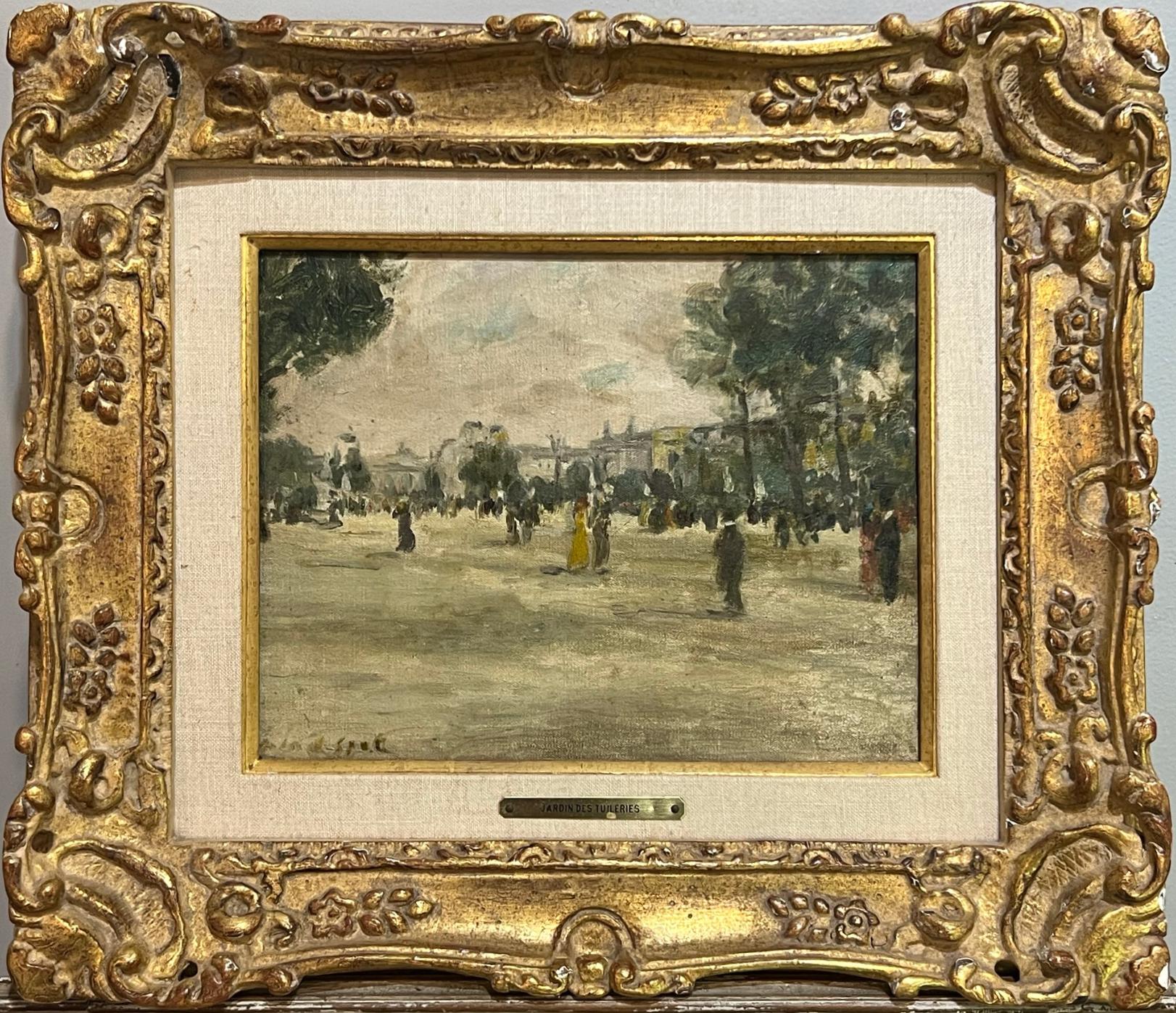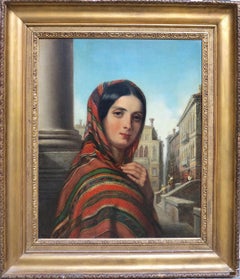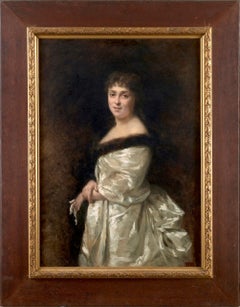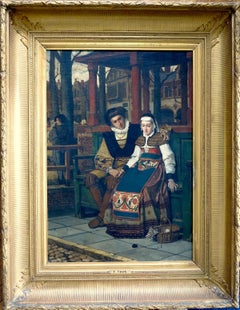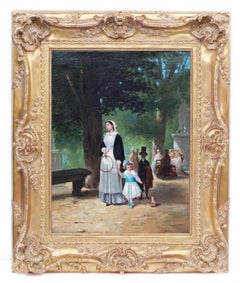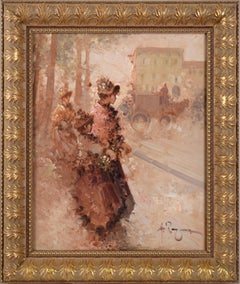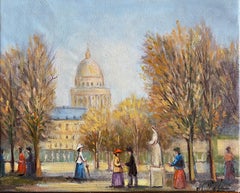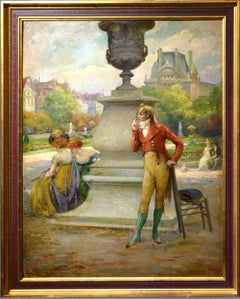Items Similar to Elegant Parisian strolling in a public garden
Want more images or videos?
Request additional images or videos from the seller
1 of 5
Jean Paul SinibaldiElegant Parisian strolling in a public garden
$4,505.66
£3,424.27
€3,800
CA$6,322.11
A$6,898.84
CHF 3,580.90
MX$82,538.67
NOK 45,453.06
SEK 42,575.30
DKK 28,952.45
About the Item
Jean Paul SINIBALDI
(Paris, 1857 - Bourg-en-Bresse, 1909)
Elegant Parisian strolling in a public garden
Oil on panel
Signed lower left
37 x 23 cm
A pupil of Alexandre Cabanel at the Académie des Beaux-Arts in Paris and of the Belgian academic painter Alfred Stevens, Paul Sinibaldi participated in Paris at the Salon des Artistes Français from 1882 and until 1905. He was repeatedly awarded: mention honorable in 1886, bronze medal at the Universal Exhibition of 1889, second class medal in 1898 and silver medal at the Universal Exhibition of 1900.
He mainly practiced genre painting, historical painting, and portraiture - at the end of his career, more rarely landscape and Symbolist painting.
In 1888, he received a travel grant, which he used to make his grand tour of Italy to study the great masters of the Renaissance.
Sinibaldi also faced the grand decor by participating in the construction sites of the Hôtel de Ville de Paris and the town hall of Lille (destroyed in 1916) as well as the decoration of the castle of Neuville-sur-Ain, to which he had access on recommendation. of his father-in-law: the departmental architect Tony Ferret.
Sinibaldi was made a Knight of the Legion of Honor in 1900.
The artist died on January 17, 1909, in Bourg-en-Bresse. Its studio fund was sold at a public sale on May 17, 1909, at the Hôtel Drouot.
Museums: Amiens, Gray, Mulhouse, Sète, Budapest, Reims ...
- Creator:Jean Paul Sinibaldi (1857 - 1909, French)
- Dimensions:Height: 14.57 in (37 cm)Width: 9.06 in (23 cm)
- Medium:
- Movement & Style:
- Period:
- Condition:
- Gallery Location:Paris, FR
- Reference Number:Seller: ARTBORESCENCE1stDibs: LU1954215672502
About the Seller
No Reviews Yet
Vetted Professional Seller
Every seller passes strict standards for authenticity and reliability
Established in 2014
1stDibs seller since 2022
13 sales on 1stDibs
- ShippingRetrieving quote...Shipping from: Paris, France
- Return Policy
More From This Seller
View AllPeople's woman of Venice, Italy
Located in Paris, IDF
Henri Auguste Cesar SERRUR
(Lambersart, 1794 – Lille, 1876)
People's Woman of Venice
Oil on canvas
Signed, located and dated
65 x 60 cm
Venice 1850
Exhibitions:
- Paris Salon of 1...
Category
Mid-19th Century French School Figurative Paintings
Materials
Oil
Portrait of a worldly woman
Located in Paris, IDF
Marie Madeleine Amélie LOISEAU, born DUMONT
(Paris, 1860 - ?)
Portrait of a worldly woman
Oil on canvas
Signed and dated lower left
117 x 89 cm
1881
Exhibition: Salon de Pontoise of 1881 or 1882 under number 292
Marie Madeleine Amélie Dumont was born in Paris on January 23, 1860. She married on June 10, 1883 in Paris Mr. François Paul Raoul Loiseau, lawyer at the Paris Court of Appeal. Three children were born from this union, two girls and a boy.
Marie Loiseau was a student of Mademoiselle Espérance Langlois (active between 1860 and 1890) and Pierre Dupuis...
Category
Late 19th Century French School Portrait Paintings
Materials
Oil
The two lovers
Located in Paris, IDF
Franz Kaspar Huibrecht VINCK
(Antwerp, 1827 - Berchem, 1903)
The two lovers
Oil on canvas
Signed at the bottom
82 x 56 cm
Pupil of Edward Dujardin (1817-1889) and Joseph Dyckmans ...
Category
Late 19th Century French School Figurative Paintings
Materials
Oil
Notre-Dame. Grey weather, Paris
Located in Paris, IDF
Ricardo FLORÈS
(Alençon, 1878 – Rennes, 1918)
Notre-Dame. Grey weather
Oil on canvas
Signed lower right
46 x 55 cm without frame
65 x 74 with frame
1907
Exhibition: Fourth exhibit...
Category
Early 20th Century French School Landscape Paintings
Materials
Oil
Road from Subiaco to Tivoli
Located in Paris, IDF
Alexandre François LOISEL
(Neuilly-sur-Seine, 1783 - Neuilly-sur-Seine, 1865)
Road from Subiaco to Tivoli
Oil on canvas
Signed and dated lower right
50 x 60 cm
1836
Son of a renti...
Category
Early 19th Century French School Landscape Paintings
Materials
Oil
Full-length portrait of Jules Michel Simonet (1834-1881) as a child with his dog
Located in Paris, IDF
Benjamin Théophile CHARON-LÉMERILLON
(Paris, 1807 – Bouzareah (Algiers), 1873)
Full-length portrait of Jules Michel Simonet (1834-1881) as a child with his dog
Oil on canvas
Signed...
Category
Mid-19th Century French School Portrait Paintings
Materials
Oil
You May Also Like
The walk in Luxembourg Garden in Paris, also called "The Privileged"
By Antoine-Victor-Edmond-Madeleine Joinville
Located in Saint-Ouen, FR
JOINVILLE Antoine Victor Edmond Madeleine (1801-1849)
From Ludwig Knaus (1829-1910)
The Walk in Luxembourg Garden" in Paris, also called "The Privileged"
Preserved at The Louvres M...
Category
1870s Academic Portrait Paintings
Materials
Oil
French Ladies on the Boulevard - Figurative Landscape
Located in Soquel, CA
Softly rendered European street scene by an unknown artist (20th Century). A group of well-dressed women are standing at the side of the road, near some trees. To the right and in the background, a horse an carriage is passing by. The scene is executed with small, circular strokes, giving the piece a soft yet dynamic feel.
Signed in the lower right corner.
Presented in an ornate gilded frame...
Category
Late 20th Century English School Landscape Paintings
Materials
Canvas, Oil, Stretcher Bars
Beautiful Parisian Park Scene Fashionable Figures
By Michel Pabois
Located in Cirencester, Gloucestershire
Parisian Park
by Michel Pabois (French b.1939)
signed, titled verso
oil on canvas, unframed
canvas: 9 x 9.5 inches
Superb original oil painting by the French artist, Michel Pabois...
Category
21st Century and Contemporary Impressionist Figurative Paintings
Materials
Oil
$465 Sale Price
30% Off
French Genre Scene in Parisian park 19th Century Oil painting
By Emile Tabary
Located in Stockholm, SE
Signed by Émile Tabary. Lively scene in in a parisian park, pictured moment of city life of the late 19th century. In this painting, some irony and humor are very subtly felt. One of...
Category
Late 19th Century Realist Landscape Paintings
Materials
Oil, Cardboard
Parisians Strolling in The Park 1940's
Located in Douglas Manor, NY
6069 Oil on canvas of Parisians strolling in the park set in a period frame
Image size 22.5x27.5"
Category
1940s Figurative Paintings
Materials
Oil
French Impressionist Parisian Park JARDIN DES TUILERIAS
By Gabriel Spat
Located in New York, NY
For sale is this painting that captures the essence of a bustling park, various individuals are depicted strolling along verdant pathways under the shade of towering trees. The artis...
Category
Early 20th Century Impressionist Landscape Paintings
Materials
Oil
